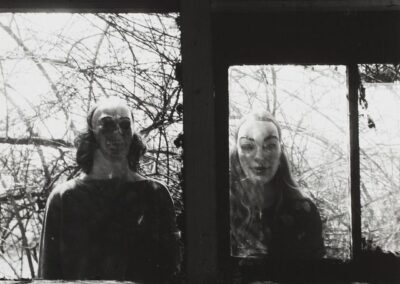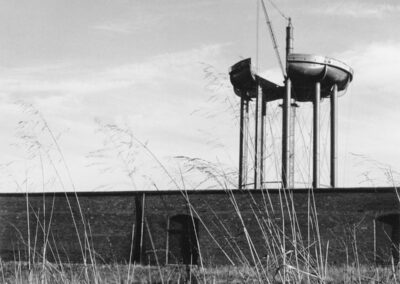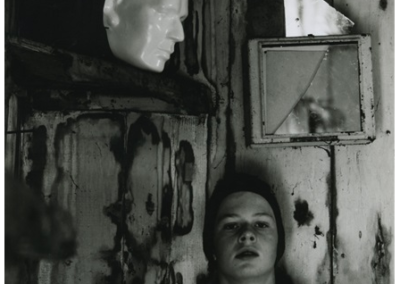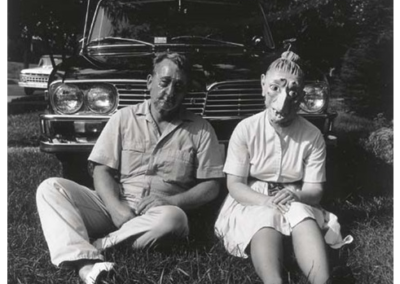Our latest Artist You Need To Know, in the ongoing series from AIH Studios, is an artist of unique vision. Ralph Eugene Meatyard‘s photographs are sometimes playful, sometimes disturbing. His subjects are often characters in a scene he’s staged, that is as unsettling as it is evocative. The nature of his images – which often seem to be captured moments, staged, which is only emphasized by the masks many of his players wear, or the dolls that are so often props, or fellow ‘actors’ – is often as ominous as it they are somewhat absurd.
-

Romance (N.) from Ambrose Bierce # 3, 1962
-

Untitled, n.d.
-

Untitled, 1957-58
-

An Entire galaxy of romantic whims, n.d.
-

Boy with Chicken, n.d.
-

Ambrose Bierce, 1962
Ralph Eugene Meatyard was an American photographer who often employed multiple exposures to create enigmatic and sometimes haunting scenes. Although he received little acclaim and attention in his lifetime (1925 – 1972), his work has earned him a spot as a significant figure in both the history of American photography, and beyond. His education was unique: after serving in the Navy during WWII, he studied to become an optician and later worked in this field in Lexington, Kentucky. Although primarily self taught (incorporating his knowledge of lens and such, through his ‘day’ job), Meatyard joined the Lexington Camera club in 1950 and later participated in summer photography courses at Indiana University, with influences like Henry Holmes Smith and Minor White.
Intersecting interests like jazz music and Zen philosophy informed his photography. Sadly, he was just starting to gain recognition for his work before he passed, but his works are represented in the collections of The Metropolitan Museum of Art, New York, the Smithsonian American Art Museum and the Renwick Gallery (Washington, D.C.), and the Walker Art Center in Minneapolis, Minnesota, among many others.
An interesting article on the life and works of Ralph Eugene Meatyard, by James Rhem, can be enjoyed here.











